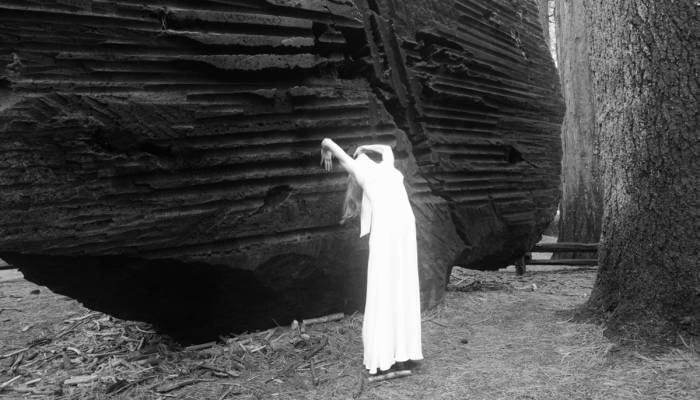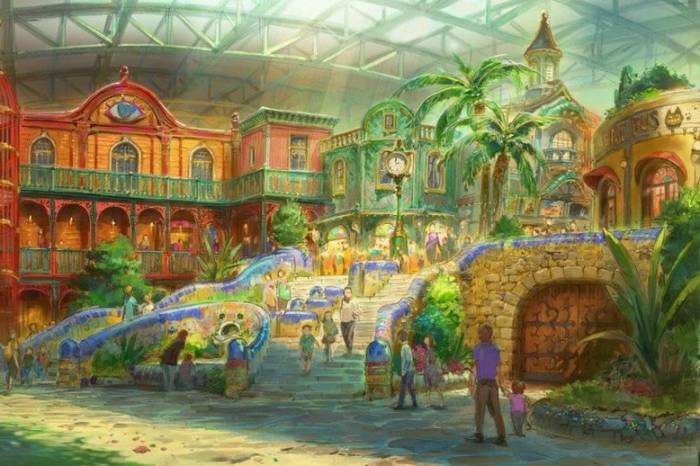Liber Floridus, a Medieval Encyclopedia
This book was compiled between 1090 and 1120, it sought to gather chronologically the entire knowledge of the time.
Originally written in Latin and later translated into French as the Livre fleurissant en fleurs, the Liber Floridus is a compilation of events and several types of knowledge. It was made by a man who identifies himself as Lambert, the deacon at the church of Our Lady of Saint-Omer, and a character of whom –besides his name and title– we know nothing about. The original manuscript still survives and is located in the University of Ghent in Belgium. Some other copies are kept in museums and libraries throughout Europe.
This compilation is an encyclopedia, but it is important to point out that in the Middle Ages this format represented a slightly different idea: they were books and collections that were mainly used for didactic monasteries and abbeys. For Lambert, this encyclopedia was a celestial prairie where the “flowers of literature” grow and attract readers who are full of faith because of its sweetness; this is why the book is called the Blooming Book.
In addition to recording historical events, the Liber Floridus contains illustrations, diagrams and several maps (drawn, according to some experts, by Lambert himself), including a mapamundi. His sources are roughly 190 different books, among which we find the Bible, different historical chronicles and Astronomy, Botany, Geography, and Natural History collections.
In the index, Lambert enlists 161 different sections about cosmological, historical and biblical subjects. The book is full of lists, among them those containing the names of popes, kings, countries and inventors. It also contains an account of the apocalypse, which resembles a modern comic book, and it also mentions the Crusades on several occasions.
Beyond a stimulating account of the thoughts and knowledge of a medieval monk, Liber Floridus is a work of art in and of itself: written and illustrated by hand, as they did with books of the time. This is a splendid compendium that reflects that streak of human will-power. Impressed on uncountable records, bestiaries, catalogues, miscellanies and encyclopedias, it seeks to gather all that is known, with the essential purpose of sharing it. A precious gift.
Related Articles
When ancient rituals became religion
The emergence of religions irreversibly changed the history of humanity. It’s therefore essential to ask when and how did ancient peoples’ rituals become organized systems of thought, each with their
Larung Gar, the valley that is home to thousands of Buddhist monks
If we think about the monastic life it is very probable that we think about solitude, seclusion, silence and a few other qualities whose common denominator is the appropriate isolation for mediation
Dialogue with the Dalai Lama on science and spirituality
The Dalai Lama has been interested in science since he was a child. Over the years he’s visited many laboratories and has attended conferences that discuss consciousness from the scientific point of
A New Year's resolution for the earth
Worrisome quantities of waste are generated by human populations. Especially in cities, these have reached unprecedented and alarming levels. A largely uncontrolled practice, it affects everything on
The Dark Mountain Project: or how literature can confront ecocide
One impulse from a vernal wood May teach you more of man, Of moral evil and of good, Than all the sages can. Wordsworth, “The Tables Turned” (fragment) Words are elementary. The only reason we can
Are there no women in the history of philosophy?
Do only men philosophize? This could sound like a silly question, but if we quickly review the names of philosophers, from Aristotle to Slavoj Žižek, it would appear to be an exercise that is
Things that are about to disappear: photography as environmental conservation
Cristina Mittermeier is the founder of the International League of Conservationist Photography (iLCP), and is at the front of a modern movement to use photography with environmental purposes. Her work
Architecture And Music; An Affair That Acts On The Matter
A composition is like a house you can walk around in. — John Cage Perhaps music, more than the art of sound, is the art of time. That’s why its communion with space, and architecture, is so often so
Psycho-geography (On The Ritual Casting of a City)
Mrs. Dalloway walked down the streets of London guided by an “internal tide” that made her stop somewhere, enter a store, turn at the corner and continue her journey, as if she were adrift. La dérive
A Theme Park Inspired by Hayao Miyazaki is About to Open …
One of animation’s most spectacular exponents, Hayao Miyazaki, is the artist who transformed the direction of traditional animation forever.












